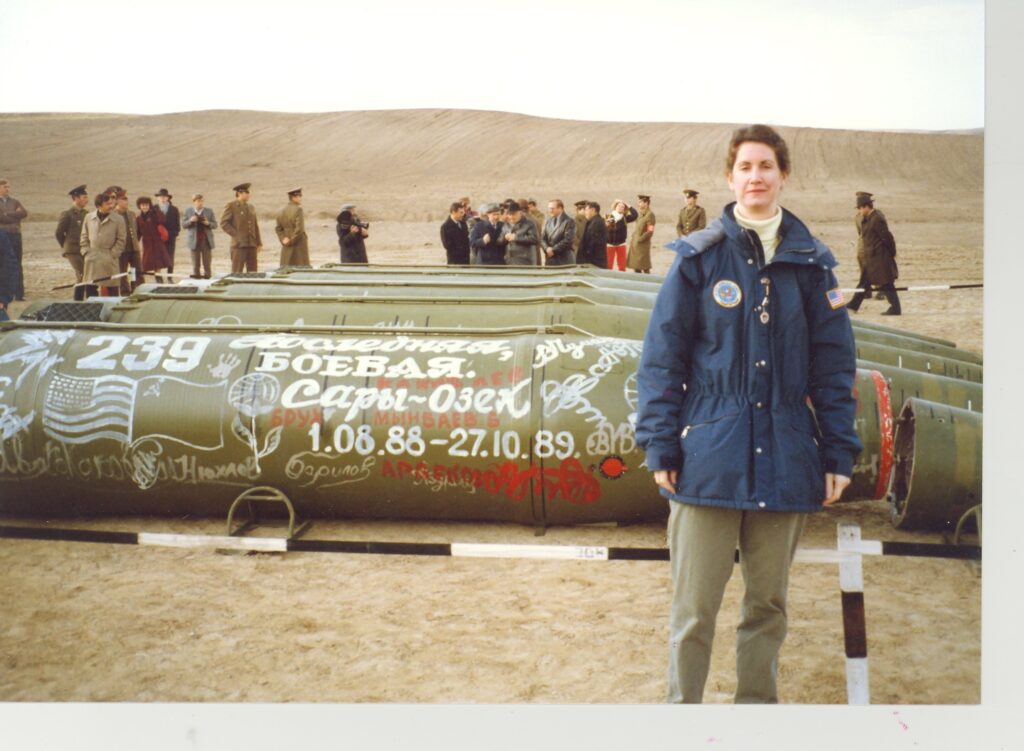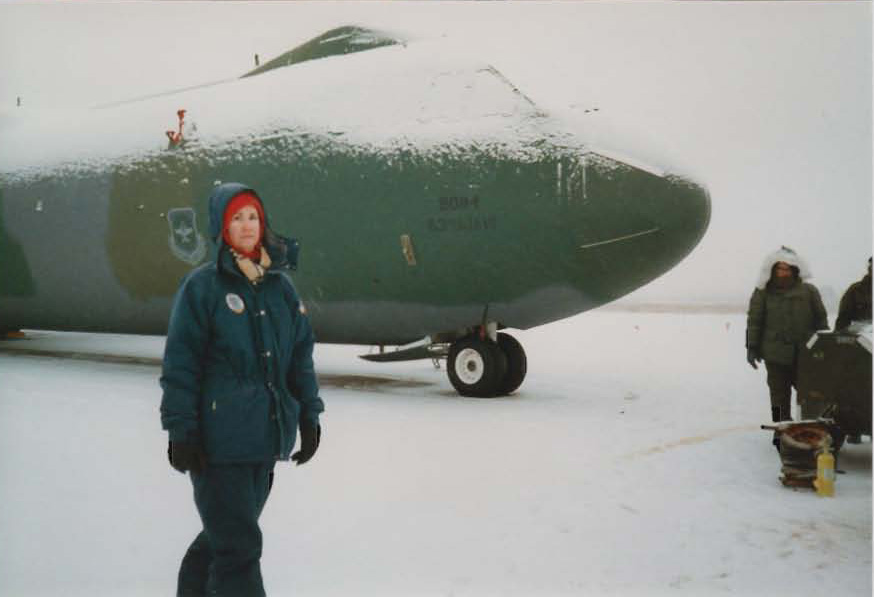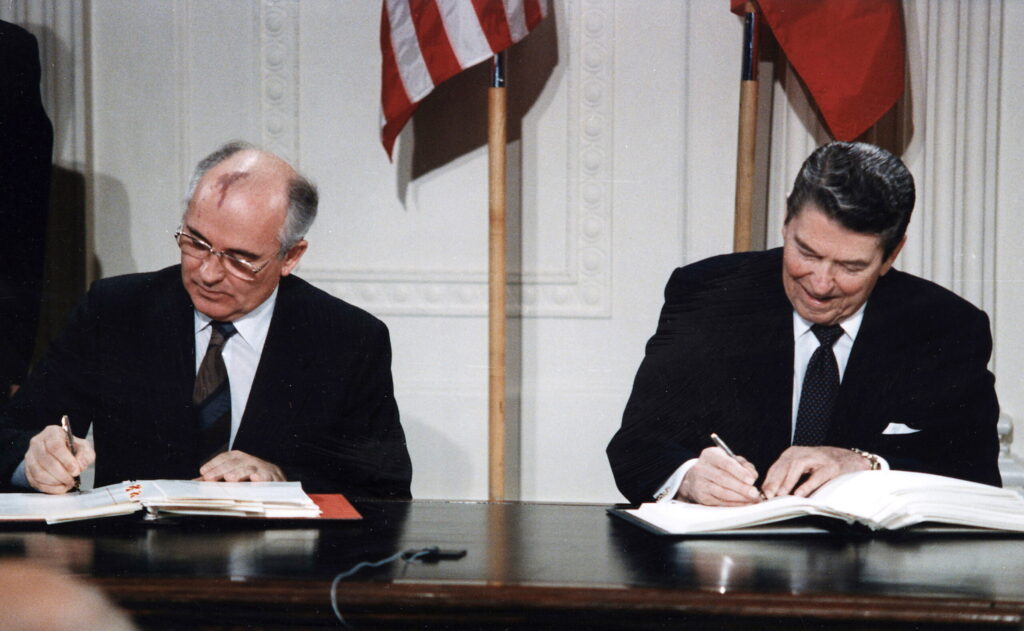
Reducing Threats
Nuclear weapons are one of the greatest threats to world security.
American diplomats help reduce this threat by negotiating and implementing treaties and other agreements to control and eliminate nuclear weapons.
Foreign Service Officer Eileen Malloy was one of the few female diplomats working on arms control issues in the late 1980s. In 1988, she became the head of the new Arms Control Implementation Unit at the U.S. Embassy in Moscow, which helped implement the terms of the Intermediate-Range Nuclear Forces Treaty.

When I arrived in Moscow to take on the huge challenge…I turned out to be a pregnant female. They just did not know what to do with me.
Eileen Malloy, Foreign Service Officer

Visiting a U.S. monitoring station
Eileen Malloy visits a U.S. monitoring station at the Soviet missile production city of Votkinsk, 800 miles east of Moscow, 1989. (Collection of the National Museum of American Diplomacy)

Arms Transformed into Art
Foreign Service Officer Eileen Malloy received this unique gift from a Soviet delegation at a nuclear missile destruction site in Kazakhstan. An artist transformed a missile fragment into a sculpture, symbolizing the hope for a more secure future. (Gift of Ambassador Eileen Malloy)
Nuclear Negotiations
Foreign Service Officer Eileen Malloy and her colleagues worked to ensure the Soviet Union adhered to the terms of the Intermediate-Range Nuclear Forces Treaty. They traveled to remote areas of the country to verify that the Soviets had eliminated weapons systems.
Malloy negotiated with Soviet officials to obtain direct access to nuclear scientists and factories involved in missile production. Her efforts provided U.S. inspectors with the logistic and technical support needed to fulfill their mission.
